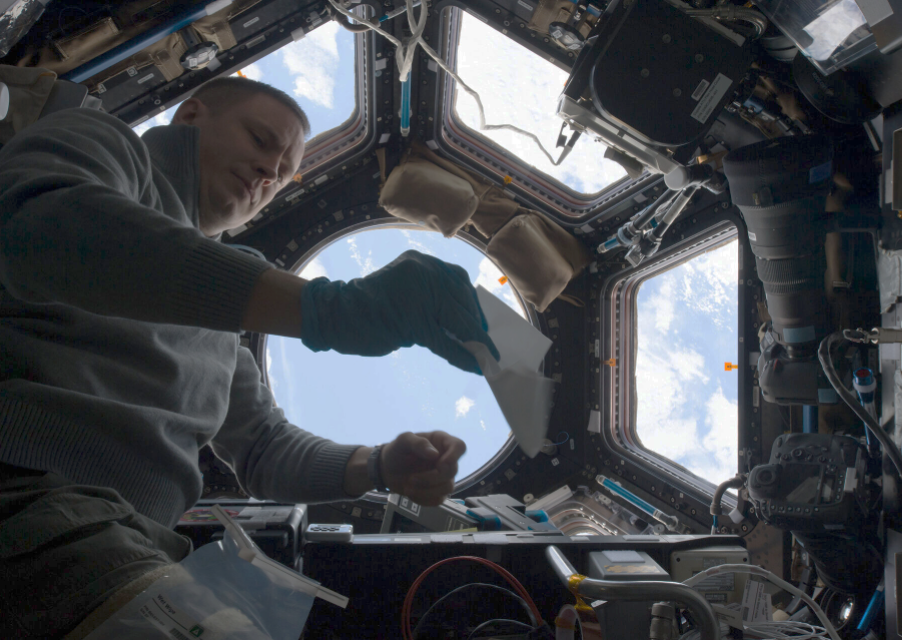
- This event has passed.
This is a free and open to the public hybrid event, held both inperson and online.
Due to the newly effective insurance requirements, we regret that we can not allow people under 18 on the Chapman Campus, they are welcome to attend online.
Join Zoom
This meeting’s speaker will present online from Chicago.
What Cleaning the
International Space Station
Can Teach Us About a
Human Health Crisis on Earth

The spread of antimicrobial resistance depends on many factors, including previous exposure of microorganisms to antimicrobial disinfectants. Antimicrobial resistance in the environment ultimately translates into a human health risk. While antimicrobial chemical disinfection is used to prevent infection by pathogenic organisms, it can inadvertently select for antimicrobial resistance. Disinfectants are not only used in hospitals and homes on Earth, but also on the International Space Station (ISS).
To protect crew health, cleaning the ISS primarily using a disinfectant containing the quaternary ammonium compound benzalkonium chloride (BAC) has been done for decades. BAC is not only found in disinfectants, but a range of products from consumer antibacterial hand soap to dryer sheets. Due to its widespread use, BAC has been detected throughout the indoor and natural environment, where it has been linked to antimicrobial resistance. BAC use on Earth has increased dramatically in the past few years, so findings on the ISS may also be indicative of changes in our Earth-based indoor microbiomes. To investigate the relationship between BAC disinfectant use and antimicrobial resistance, Staphylococcus spp. isolates collected between 2009 and 2015 from the ISS were examined. Whole genome sequencing identified multiple BAC resistance genes in addition to resistance to other compounds.
This work highlights the importance of considering the long-term impact of antimicrobial disinfection when selecting cleaning products. Additionally, the benefits of specific products to human health must be weighed against their ability to select for resistance and the long-term risk that then emerges. Examining a range of Staphylococcus spp. isolates for resistance markers has given us a greater understanding of how tolerance varies with specific BAC genes in the indoor environment. Additionally, the ISS environment and long-term BAC disinfection seems to select for BAC tolerance. Further work is needed to understand if there are differences between the frequency of BAC resistance genes in the ISS compared to Earth-based environments.
here are links to a formal research paper about resistance on the International Space Station written by a previous lab member (for those interested in scientific journal style writing on this topic), and a more informal op-ed on use of cleaning chemicals and its relationship to antibiotic resistance.

Olivia is an environmental engineer interested in fundamental rules that govern how microbes adapt to their environment. She received her Bachelor’s degree in Civil and Environmental Engineering from University of Maryland, College Park where her research focused on optimizing developments to minimize stormwater flooding. She then moved to England to study in the Environmental Engineering Master’s degree program at Imperial College London. Her dissertation focused on barriers to the implementation of novel microbial wastewater treatment in Serbia. After completing her Master’s, she spent a year working in industry as a consultant engineer for drinking water projects before returning to academia. Olivia recently completed her PhD in Environmental Engineering at Northwestern University in the Hartmann Lab where her research focused on how disinfectant use impacts antimicrobial resistance and strategies to combat the resistance trend.
Views: 4
